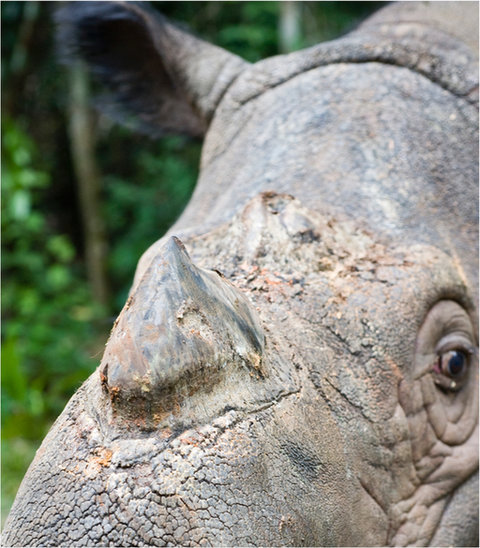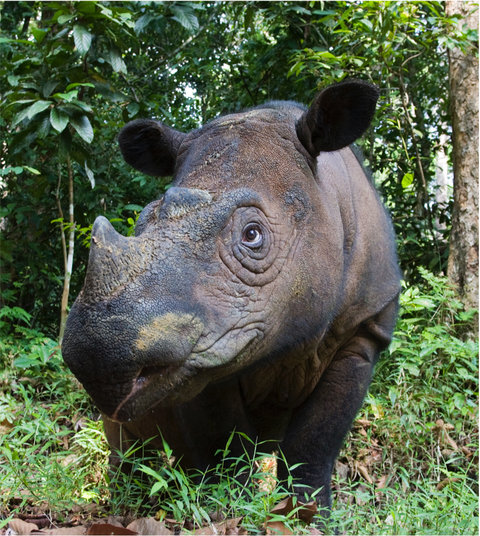
Rhinohornsaremadeofkeratin.Thismaterialisfoundinyourhairand fingernails.
RhinosResearch
AttheCincinnatiZooandBotanicalGardens,theworkofonescientistshowedpromise.TerriRothandherteamdevelopedwaysofhandlingtherhinosthatmadetheireffortsmoresuccessful.In2001,acaptiverhinonamedEmigavebirthtoacalf.NamedAndalas,hebecamethefirstSumatranrhinobornincaptivityin112 years.
TheSumatranRhinoSanctuaryhasalsobeensuccessful.Itishometosevenrhinos.Afterfallingintothepit,thenewrhinowasbroughttoafacilityinBorneo.Shehasbeennamed Pahu.

EminibblesonleaveswithherbabyattheCincinnatiZoo, U.S.A.
Pahu’sRescue
VeterinarianswereonhandtoguidePahuintoacrate.Thecratewasthenloadedontoatruck.Heavyrainshadchokedtheroadswithdebris.So,alocalcompanysentabulldozertocleartheway.Pahuwasthengivenapoliceescorttothe facility.
Pahuwillbegiventimetosettlein tohernewhome.Inthemeantime,planscontinuetofindotherrhinosinthewildandgivethemnewhomes,too.TheSumatranRhinoSanctuaryisnearlyfull.So,anewfacilityisbeing built.
Fornow,Pahu’srescuemarksanothermajorstepinrescuingtheSumatranrhino.Theworkisslow,but promising.

Atthesanctuary,eachrhinolivesinitsownsectionof rainforest.
